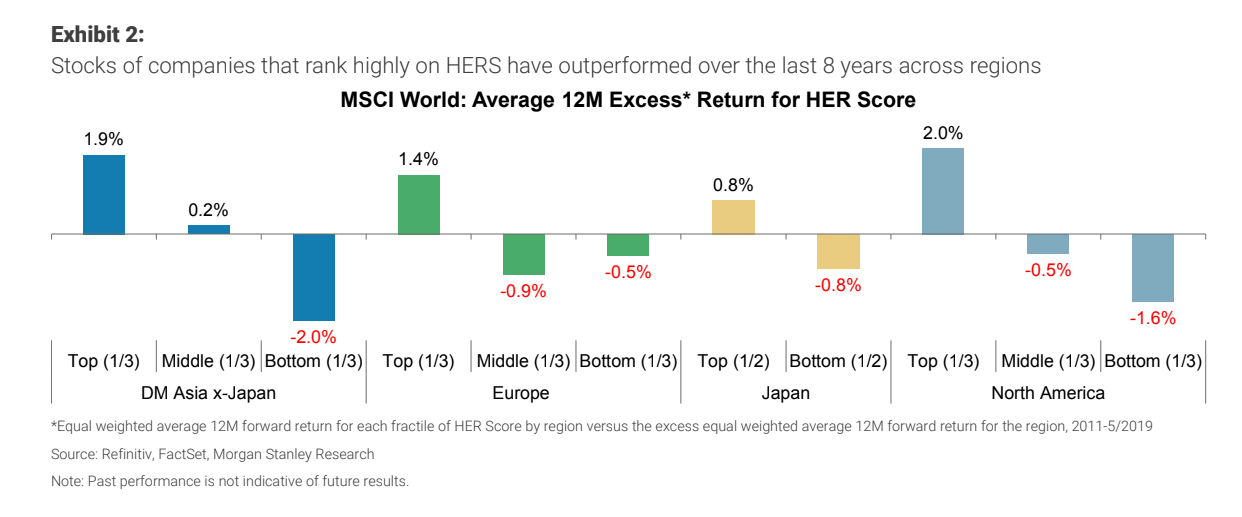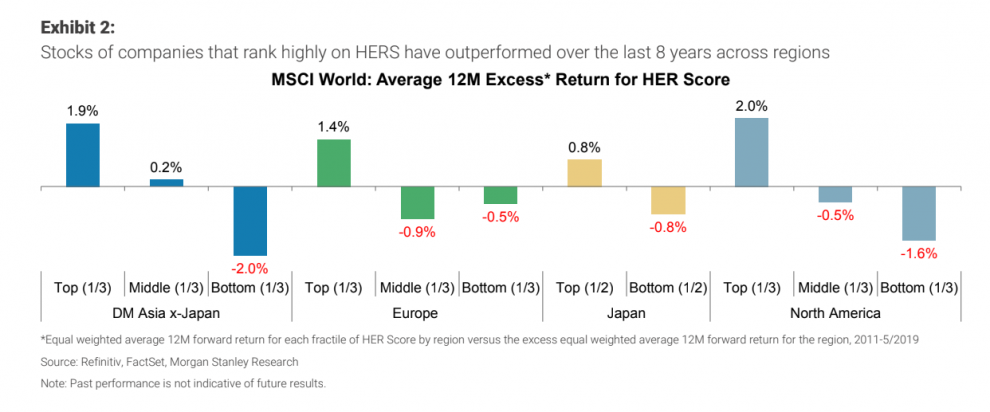Companies with better representation of women in their workforce and their senior ranks see better share-price returns than those who don’t, according to new research.
The findings from Morgan Stanley echo other studies but is based off very recent data, from January 2010 to May 2019.
The brokerage evaluated 1,875 companies by four metrics: the percentages of women who are board members, executives, managers and employees.
Companies that ranked high outperformed both their regional stock-market benchmarks as well as the companies that ranked lower.

In North America, Morgan Stanley counted Apple AAPL, +4.23%, Facebook FB, +1.66%, JPMorgan Chase JPM, +1.54%, Visa V, +1.29% and Walmart WMT, +2.18% as companies scoring high in gender diversity and with overweight ratings, whereas Union Pacific UNP, +1.88%, Southern Company SO, -2.52%, CSX CSX, +0.79%, Norfolk Southern NSC, +1.70% and Consolidated Edison ED, +0.03% all rank lower on gender diversity and have underweight ratings.
Morgan Stanley didn’t offer an explanation for the divergence but insists that gender diversity isn’t a proxy for larger-cap, high-dividend companies. The analysts found better results no matter whether by market capitalization, dividend yield, return on equity or beta.
Related: 10 reasons gender diversification can make you money
In every region of the world, there’s been improvement in gender diversity at the board room, but notably in Europe, where the percentage of women executives has increased by 8 percentage points and the percentage of women on boards by 20 percentage points. The European gains have been driven by specific programs and policies, such as Belgian, French, Italian and Norwegian quotas that call for up to 40% of a board to be made up of women.
In North America, women made up 37% of employees, 29% of managers, 15% of executives and 22% of board members.
In North America, there’s been a 1 percentage-point increase in women employees, a 3 percentage point rise in women managers, a 4 percentage point in women executives and a 9 percentage point rise in women board members since 2010.





